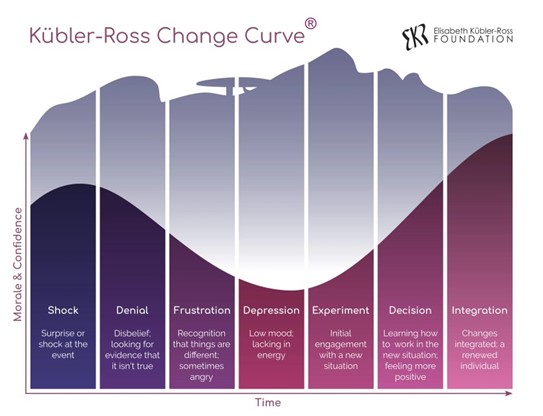Change may be constant, but how you manage and embrace change can make all the difference, argues Chris Evans
‘The only constant is change’. Whilst this statement is meant to be thought-provoking, it is also ambiguous. Are you experiencing constant change, or are you constantly changing?
Grammatically there is little difference; however, I see them very differently. In an ever-accelerating technological landscape, change is a constant. We aren’t just experiencing gradual evolution anymore. With new players such as ChatGPT, the world is seeing step changes in technology and this trend is getting faster. Unprecedented shifts in working practices due to Covid-19 have driven new ways of working that were unthinkable five years ago.
However, still prevalent within our space is the practice of reorganisation, reshuffling, and reintroducing previous flawed models of operation, without actually changing anything at all. Whether it be boards of directors, governments, or football teams, there is a fundamental belief that ‘a change is as good as a rest’. In other words, the act of changing is all that’s required to resolve a problem. The big problem with this approach is that it often wholly avoids ‘the elephant in the room’.
Change can often be scary, but as stated above, it is inevitable. So if you are facing it or leading others into it, then consider the following:
- Focus on the core problem, not the easy fixes – Often we aim for low-hanging fruit or quick wins; however, if the fundamental issues still exist, then changing around them will not resolve them. Sitting in the dark due to a power outage is not resolved by changing the lightbulbs to LED.
- Make it mean something – Change is not about adding punctuation or changing header colours. It’s about tackling real issues and delivering value. What benefit does it provide, and to whom? Can’t answer that satisfactorily? Then why are you doing it?
- Hearts and minds – If you want people to change, cause them to be invested. They must understand the value mentioned above, which must mean something to them. People will ‘perform’, but if you want them to ‘deliver’, they must be on board.
- Use your resources – Want people to be invested? Then involve them from the start. All those salaries you are paying are to people you believe have skills beneficial to the organisation. Use them, especially if those skills relate directly to the activity.
So, the organisation ensures change is perfectly formed, adds value, engages staff, and addresses the big problems we face. Job done, right? Well, no. If the company lays the path to success, employees have to walk it; otherwise, there is an equally high chance of failure.
When someone sees the headlights of change on the road, they can either jump behind the wheel and drive it forward or shut their eyes, ignore its approach, and let it run them over.
To become someone who can take control of change and use it to advantage, employees should consider the Kubler-Ross Change Curve®, the output of an in-depth study into human behaviour. Whilst there are no set times for any of these phases, most people will likely pass through at least some of them on their journey through change. It is heartening to know that resistance to change is human nature, not an individual failing.

By evaluating your approach against the natural order described within the curve, it is possible to embrace and ultimately drive change yourself. Being at the wheel creates an investment that delivers value.
Embracing change includes:
- Understanding oneself – Change can be tricky. Being clear on personal needs, standards, and goals will provide an anchor when the seas get rough.
- Using imagination – There is always more than one solution, and the obvious one may not be the best.
- Understanding the position – It’s important to recognise what can and cannot be controlled and the available tools in the toolbox. Focus on things that can be managed and make the best of them!
- Don’t quit – Successful people don’t quit – it’s as simple as that. There is a difference between deciding to pull the plug on something, which may be tactically astute, and throwing hands in the air and walking away. Accept setbacks and push on.
- Call somebody – There is no requirement to deal with change alone, emotionally or physically. Don’t be afraid to call on additional resources, seek the advice and opinion of others, and go beyond the norm. Relevant experience, information, insight, and ability can be found in the strangest places.
- Be positive – Accept that things are changing and the landscape might be uncertain. Don’t try to anticipate every outcome in every parallel universe. Instead, do the best you can in the knowledge that no more could be done and a good outcome is more likely. If things do not go according to plan, take comfort in knowing the best efforts were made and turn it into a learning experience.
- Keep well – It is easy to neglect the most critical things elsewhere when things get tough. Health is a person’s most valuable possession; without it, the ability to cope will be non-existent.
In summary, change is a game of two halves that requires the instigators, implementers, and recipients to play an active, contributory role. Placing the focus on the value and using that to drive the rationale is the most powerful way to plan for success and the best way to bring people on board and keep them there.
Finally, the emotional nature of change and its physical and mental effects should never be overlooked but managed successfully to prevent them from being a roadblock. Don’t be a rabbit in the headlights, be the one driving the car!
[1] https://www.ekrfoundation.org/

Chris Evans
Chris Evans is a Service Management specialist and itSMF UK member.

